Discover the Best Rod Sizes for Construction in Bangladesh
Rod size plays a pivotal role in the construction industry, especially in Bangladesh, where infrastructure is booming. Whether it’s high-rise buildings, bridges, or residential complexes, the proper selection of rod size ensures structural integrity and safety. In this guide, we’ll walk through everything you need to know about rod sizes in Bangladesh, from the most common sizes to how they affect your construction project.
Importance of Rods in Construction
Steel rods, also known as rebar, are essential for reinforcing concrete structures. Without the proper rod size, buildings can be structurally unsound. Why does rod size matter? It’s simple: larger rods provide more strength to a structure, while smaller rods are used where flexibility and lighter support are needed. Choosing the correct size is essential for ensuring the durability of any project.
Some Factors Of Affecting Rod Size Selection
Selecting the appropriate rod size is crucial for ensuring the structural integrity and safety of your project. Whether you’re building a home, a commercial structure, or a bridge, understanding the factors that influence rod size selection is essential.
- Load-Bearing Capacity: The expected load that a structure will bear determines the required rod size. Heavier loads necessitate thicker rods.
- Structural Design: The design of the structure, including its shape, dimensions, and materials, influences the spacing and diameter of rods.
- Building Codes and Standards: Bangladesh has specific building codes and standards that outline the minimum rod sizes for various types of structures.
- Soil Conditions: The soil type and its bearing capacity can impact the choice of rod size, especially for foundations.
Common Rod Sizes in Bangladesh
The most commonly used rod sizes in Bangladesh are expressed in millimeters. Here are some of the standard sizes:
- 6mm: Used in lighter structures like slabs and beams.
- 8mm: A versatile size suitable for various applications, including columns and foundations.
- 10mm: Commonly used for beams, columns, and slabs in medium-sized structures.
- 12mm: A popular choice for larger structures, such as multi-story buildings and bridges.
- 16mm: Used in high-load-bearing structures, such as industrial buildings and warehouses.
- 20mm: Primarily used for foundations and columns in massive structures.
Types of Rods Used in Construction
There are mainly two types of rods used in construction in Bangladesh:
Mild Steel Rods
Mild steel rods are less tensile and are often used in structures where flexibility is needed. These rods are typically used for non-load-bearing structures or areas with minimal stress.
Deformed Steel Rods
Deformed steel rods have ridges or deformations along their surface, providing better bonding with concrete. They are used in high-stress areas, like beams and columns, where additional strength is necessary.
Government Regulations on Rod Sizes in Bangladesh
Bangladesh has strict regulations when it comes to construction materials, and rods are no exception. The Bangladesh Standards for Construction Materials (BDS) outlines specific requirements for rod sizes, ensuring they meet safety and durability criteria. Adhering to these standards is crucial for avoiding fines and ensuring the longevity of the structure.
Popular Rod Brands in Bangladesh
When it comes to buying steel rods in Bangladesh, several brands dominate the market. These brands are known for their quality, adherence to standards, and availability. The top names include:
- KSRM: Known for high-quality steel products.
- BSRM: One of the leading manufacturers of construction materials.
- Elite Steel: Trusted for their durability and competitive pricing.
Challenges in the Rod Industry in Bangladesh
The rod industry in Bangladesh faces several challenges:
- Raw Material Dependence: The industry relies heavily on imported steel billets, making it vulnerable to fluctuations in global prices.
- Infrastructure Constraints: Inadequate infrastructure, including transportation and storage facilities, can hinder the industry’s growth and efficiency.
- Competition: Intense competition from domestic and international players can pressure margins and limit profitability.
- Environmental Regulations: Stringent environmental regulations can increase production costs and limit the industry’s expansion.
- Labor Shortages: A shortage of skilled labor can hamper production and limit the industry’s ability to meet demand.
Future Trends in the Rod Market in Bangladesh
The rod market in Bangladesh is poised for significant growth in the coming years, driven by several factors:
- Infrastructure Development: The government’s focus on infrastructure projects, including roads, bridges, and buildings, will drive demand for rods.
- Urbanization: Rapid urbanization and industrialization will increase construction activity, leading to higher rod consumption.
- Economic Growth: Bangladesh’s continued economic growth will fuel demand for construction materials, including rods.
- Technological Advancements: The adoption of advanced technologies, such as high-strength steel and automated production processes, will improve efficiency and reduce costs.
- Export Opportunities: Bangladesh’s growing manufacturing sector presents opportunities for exporting rods to neighboring countries.
Conclusion
Understanding rod sizes is vital for ensuring the safety and durability of construction projects in Bangladesh. By considering factors such as load-bearing capacity, structural design, building codes, and soil conditions, you can select the appropriate rod sizes to meet the specific needs of your project.


